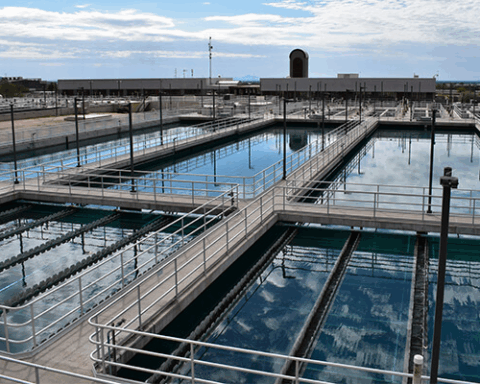The U.S. Department of Energy (DOE) has released part one of a National Definition of a Zero Emissions Building, which focuses on operational emissions from energy use. In a recently released seven-page document, DOE provides standardized minimum criteria for a zero-emissions building, setting the stage for a transition to a less-polluting built environment.
Buildings are responsible for one-third of total U.S. greenhouse gas emissions when factoring in the pollution associated with heating, cooling and other electricity needs. In addition to benefits for the earth’s climate, by reducing energy consumption and relying on clean energy sources, zero-emissions buildings can help lower utility costs and improve air quality. Moreover, the Department of Energy also highlights how the transition to zero-emissions buildings will drive job creation.
“The National Definition of a Zero Emissions Building will support the sector as it advances innovative solutions essential to creating resilient communities and high-quality jobs,” U.S. Secretary of Energy Jennifer Granholm said in a press release. The definition is “helping bring clarity to our public and private sector partners to support decarbonization efforts and drive investment – paving the way for the cutting-edge clean energy technologies we need to make America’s buildings more comfortable and affordable.”
The definition sets forth three key criteria that a building must meet to qualify as a zero-emissions building.
The first is energy efficiency. Existing buildings have several options to meet the efficiency criterion, such as obtaining an ENERGY STAR score of 75 or higher. Buildings can also have an energy use intensity (EUI) at least 35% better than the median EUI for similar buildings, or have a whole building EUI less than the latest 100 standard set by leading trade groups. New must be designed to achieve an ENERGY STAR score of 90 or higher or be certified to the most recent effective version of the ENERGY STAR Residential New Construction program or Zero Energy Ready Homes program.
The second category mandates that the building must be free of on-site greenhouse gas emissions from energy use. This means the building cannot rely on fossil fuels for heating or other uses. The only exception is the use of emergency backup generators when grid power is unavailable.
Lastly, the definition requires the building be powered solely from clean energy sources, obtained through any combination of on-site and off-site sources as long as the greenhouse gas emissions equal zero. The DOE encourages on-site clean energy such as rooftop solar.
The release of the National Definition of a Zero Emissions Building comes in response to President Joe Biden’s Executive Order 14057 on Catalyzing Clean Energy Industries and Jobs Through Federal Sustainability, signed in December 2021. The executive order sets targets for the federal government, including a net-zero emissions building portfolio by 2045, with a 50% reduction in building emissions by 2032.
The National Definition of a Zero Emissions Building provides a framework for federal agencies and private sector partners to work toward these goals.
To ensure the definition’s widespread adoption, DOE has designed it to be adaptable while not turning it into a regulatory mandate. The criteria apply to both existing buildings and new construction, covering commercial and residential properties. While the definition is not a legally enforceable regulatory standard, DOE intends to provide a clear framework that public and private entities can adopt to reduce emissions from buildings.
The announcement only includes the first part of the National Definition of a Zero Emissions Building, focusing on operational emissions from energy use. Future parts of the definition could address construction practices, electric vehicle charging integration and refrigeration, according to the DOE report.












